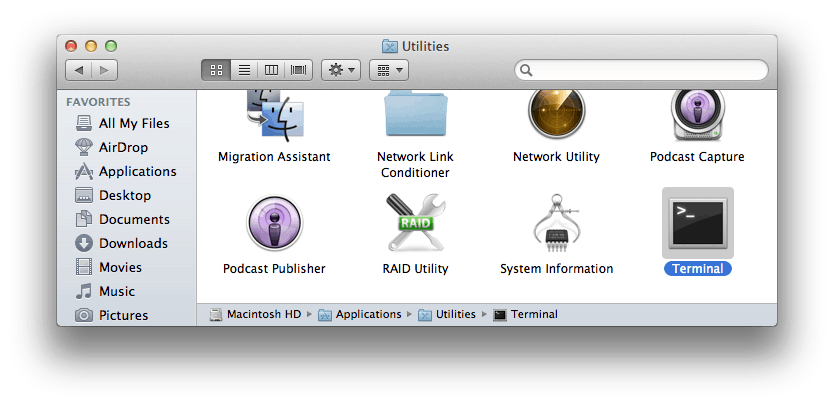Terminal User Guide
How to open terminal on mac. As you know MacOS runs on Unix and sometimes there is a requirement to run commands through mac terminal. Let's Find out how to. The command line interface is an alternate method of interacting with macOS and Mac OS X, relying on text based command entry to execute commands and perform tasks. It is accessed on the Mac by using the Terminal application.
Shell scripts must be executable files in order to run. You can use the chmod command to indicate that the text file is executable (that is, its contents can be run as a shell script).
- The Mac command line offers a faster, easier way to accomplish many tasks. It's also the medium for many commands that aren't accessible using the GUI. The Mac OS X Command Line is a clear, concise, tutorial-style introduction to all the major functionality provided by the command line.
- You can use the chmod command to indicate that the text file is executable (that is, its contents can be run as a shell script). In the Terminal app on your Mac, use the cd command to move into the directory that contains the file you want to make executable. For example:% cd YourScriptDirectory. Enter the chmod command.
In the Terminal app on your Mac, use the cd command to move into the directory that contains the file you want to make executable. For example:
Enter the chmod command. For example:
% chmod 755 YourScriptName.sh

After making the shell script file executable, you can run it by entering its pathname. For example:

or
Mac Os Command Line Update
% cd ~/Documents/Dev/ % ./YourScriptName.sh

There are a few ways to determine what version of OSX you are on.

In the GUI, you can easily click the Apple menu () at the top left of your screen, and choose About This Mac. The version of OS X will be printed underneath the large bold Mac OS X title. Clicking on the Version XYZ text will reveal the Build number.
If you're writing a script though, you may wish to access this programmatically. There are several ways:
System Profiler
Command Line For Mac Os X 10.13
sw_vers
Mac OS X user defaults system
There are further options but they are not as optimized and simple to use. These should be sufficient!
